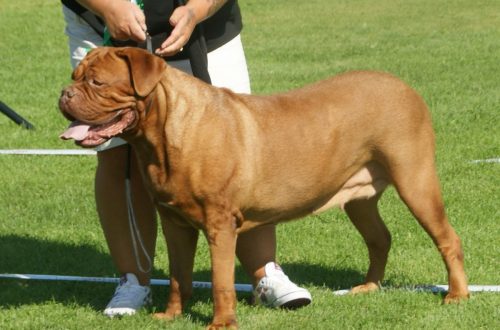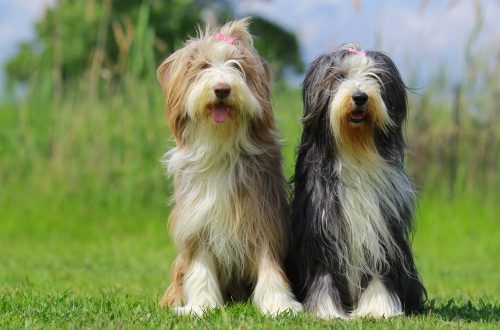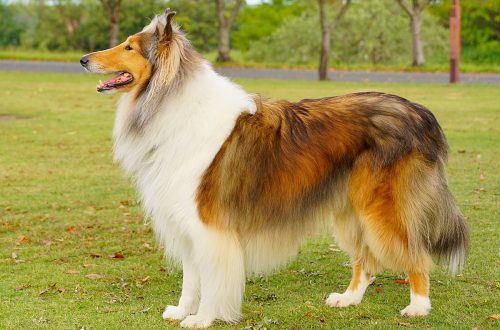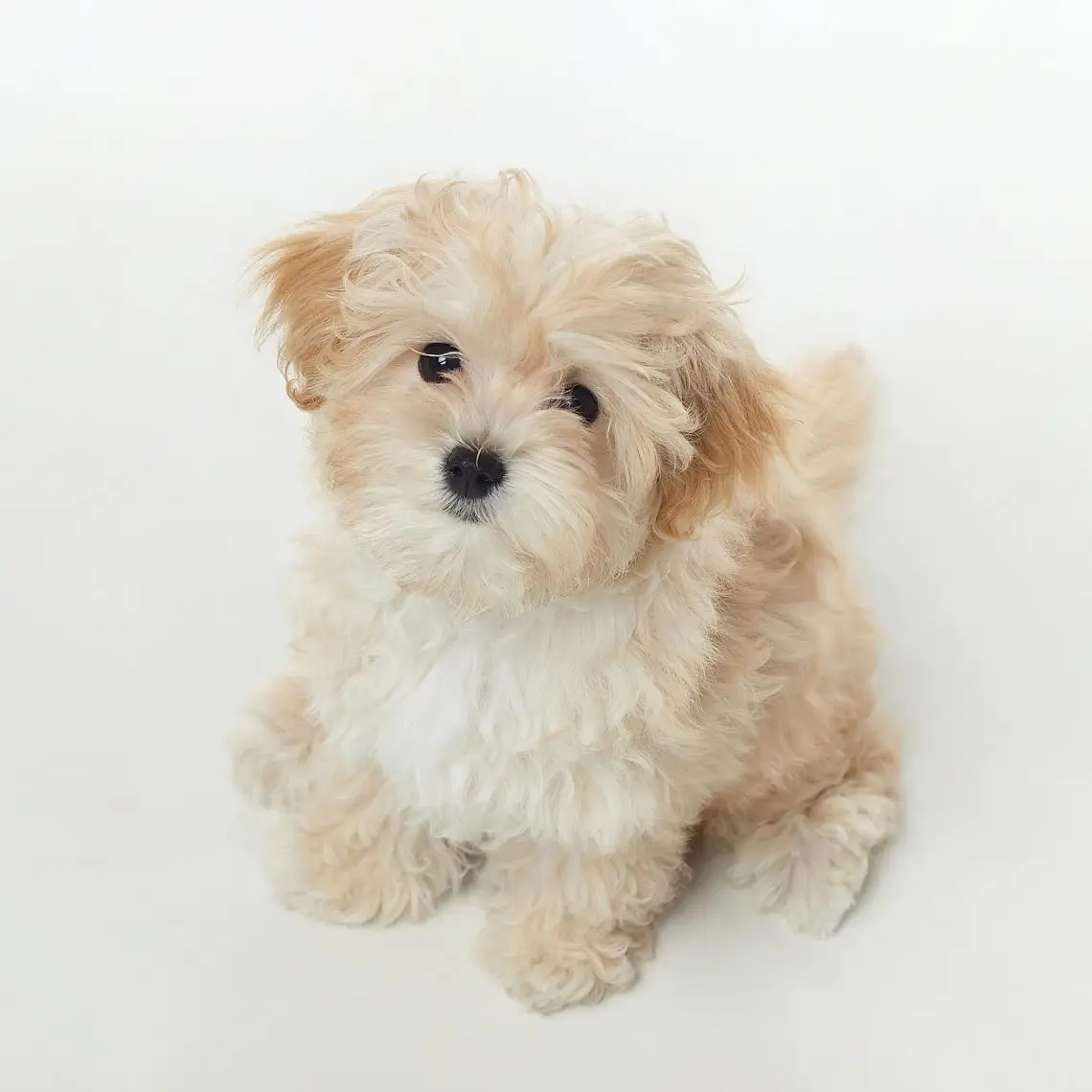
Maltipu
Maltipu is half Toy Poodle, half Maltese. The breed is regarded as a designer breed, but remains unrecognized by international cynological associations.
Contents
Characteristics of Maltipu
| Country of origin | |
| The size | |
| Growth | |
| Weight | |
| Age | |
| FCI breed group |
Basic moments
- In Western fan clubs and kennels, the breed may appear under such names as multi-poodle, malte-pu, pu-malti and even maltudel.
- Maltese and poodle mestizos are capable of bearing and producing healthy offspring, but their litters are small: four, very rarely six puppies.
- Maltipu retain puppy spontaneity and love for outdoor games until old age.
- All hybrids have a sonorous voice, so if necessary, they are able to scare away a stranger who has invaded the territory of the apartment. With the same ease, maltipu incur the wrath of housemates: the constant, albeit melodic yelping in the morning has not yet caused anyone to delight.
- Despite the fact that the breed is declared as hypoallergenic (lack of pronounced seasonal molting + minimal amount of dandruff), it is not completely hypoallergenic. So people with a hypersensitive immune system should approach the selection of a dog with extreme caution.
- Maltipu is a pet more for homebodies than for careerists. Animals endure long absences of the owner with difficulty and can even become depressed if they are forced to constantly remain alone.
- Due to their miniature and rather fragile physique, the Maltipoo breed is not recommended for keeping in families with small children, as well as inattentive and careless owners.
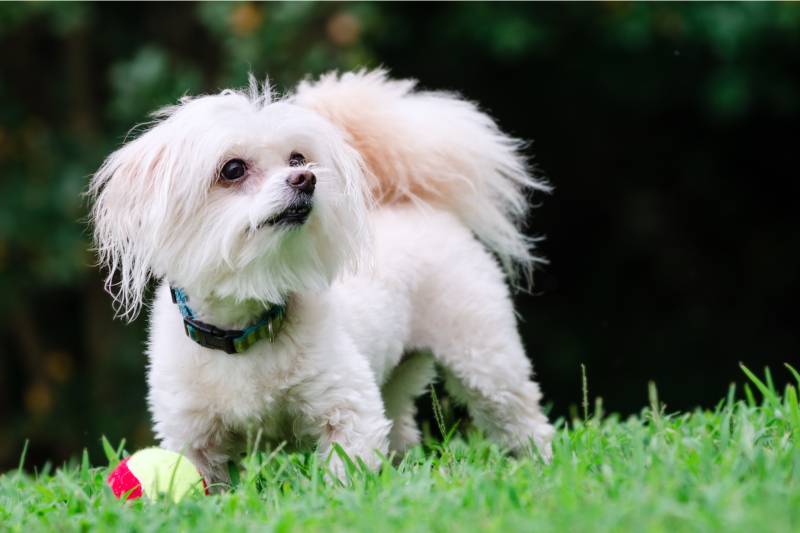
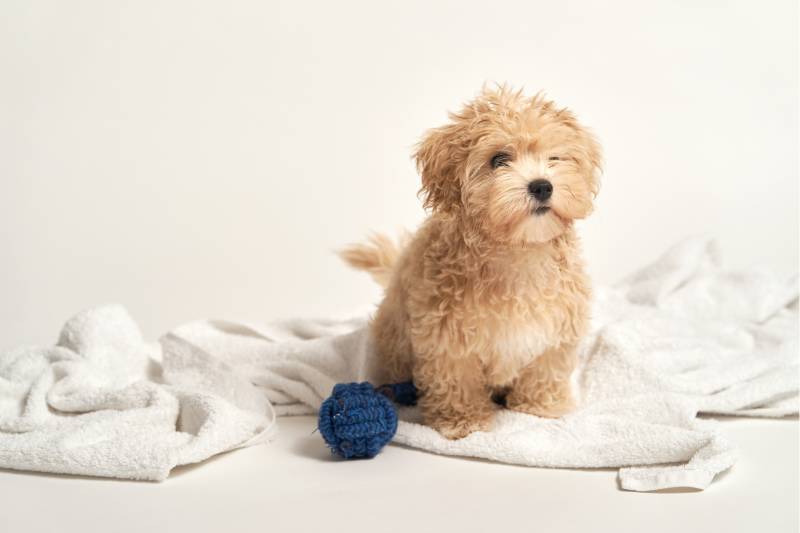
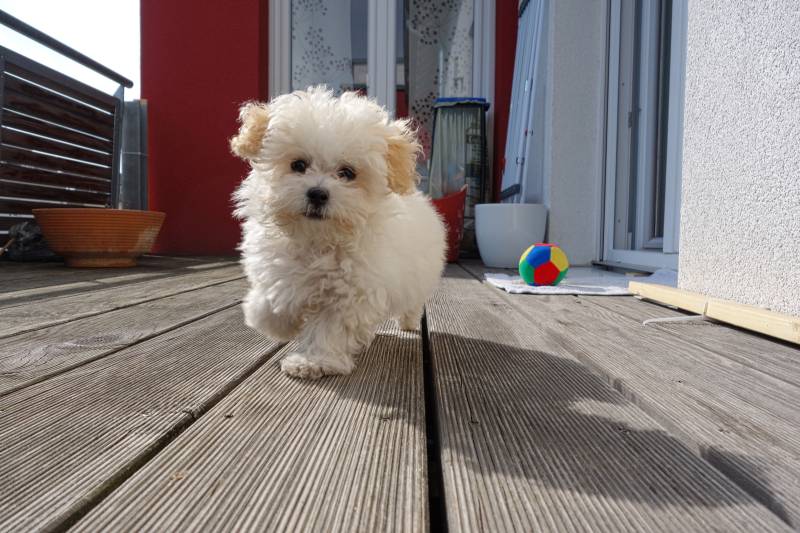
Maltipu is a cheerful charmer, affectionate egoza and a devoted accomplice who will willingly support any of your undertakings. This fluffy comrade is still a rare guest in the apartments of our compatriots, but, contrary to the forecasts of skeptics, this fact does not affect his popularity and demand. Want to check it out for yourself? Then post photos of your maltipoo in the profile of any social network – tons of likes and enthusiastic comments from fans of the breed are provided!
History of the Maltipu breed
Nothing is known about the origin of the Maltipu. It is believed that British breeders were the first to cross Maltese and Poodles about 20 years ago, and the motives for the experiment have not yet been clarified. According to one version, this was done in order to get a non-shedding dog that the most notorious allergy sufferers could afford. On the other hand, in order to bring out a pet that is ideal in terms of external and intellectual indicators, combining the charm of a lap dog and the quick wits of a poodle.
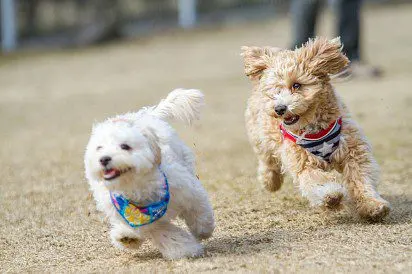
Since the early 2000s, the maltipoo has already been bred with might and main in the United States. The cost of puppies was far from democratic, so the first clients of the kennels were media people and Hollywood celebrities who were eager to emphasize their own status with an exclusive dog. As soon as photos of the Maltipu living in the apartments of Blake Lively, Rihanna and Jessica Simpson began to circulate on the network, the hype around the breed reached its apogee. Soon, the overseas mestizos also had their own cynological organization dealing with the registration of animals (American Club of Hybrid Dogs), as well as several fan clubs.
Among the domestic beau monde, the breed began to be quoted around 2010. So, for example, the ex-member of the once popular group “Hands Up” Sergey Zhukov even tried to organize his own business for the import of maltipoo puppies to Russia. The startup was unsuccessful, but the singer’s baton was immediately taken over by professional breeders, which not only fueled interest in animals, but also reduced their cost.
Like all designer dogs, the Maltipoo has never been considered a breed in its own right by cynological associations. In particular, these charming mestizos still do not have their own standard of appearance and are unlikely to acquire one in the coming decades. Russian breeding specialists are also skeptical about the maltipu, identifying animals with mongrels: excessively promoted, unreasonably expensive and of no practical value. Fans of the breed, of course, do not agree with such an assessment, therefore they give their own arguments in its defense, the most significant of which remains the hypoallergenicity of the coat of hybrids.
Video: Maltipu
Maltipu Appearance

No matter what the opponents of designer breeds say, the Maltipu looks nowhere more glamorous. Moreover, these miniature fluffy “cubs” with cherry eyes and shaggy muzzles give the impression of soft toys that just want to be squeezed in an embrace. Influences on appearance of animals first of all an origin. So, for example, the biggest cuties were and remain F1 hybrids – puppies born in the course of direct crossing of a toy poodle with a Maltese.
Second-generation mestizos, bred by mating a maltipoo with its toy poodle relative, get more of the outward features of the second parent. In fact, they are easily confused with poodle puppies, which is often used by unscrupulous sellers who sell tiny poodles at the price of designer pets. The offspring from two maltipu (F2 hybrids) looks less colorful than F1 individuals, so the demand for them, as well as the price tag, is several times lower than for the first generation of dogs.
Dimensions
In theory, the correct half-breed Maltese and toy poodle can weigh both 2.5 kg and as much as 9 kg. Although in reality the body weight of designer dogs usually ranges from 2.5-5 kg. The growth of an adult hybrid individual varies from 20 to 30 cm, which is due to the decorative “qualification” of the breed. Maltipoos are no longer just bag pets that you can put in a clutch bag and go to the club, but carrying them under your arm and holding them in your arms is still relatively easy. By the way, breeders obsessed with commercial gain do not leave experiments on extremization of the exterior characteristics of the breed. As a result: Mini-Maltipu puppies are often put up for sale, referred to in the USA as “cup”.
Wool
According to the structure of the coat, maltipu are divided into three types:
- individuals with smooth, silky hair are the most expensive species, since such a dog is not demanding to care for and does not fall off;
- curly maltipu – dogs that have inherited the “fur coats” of the toy poodle. There is an order of magnitude more fuss with this variety, since curly strands are often confused, forming tangles;
- dogs with a hard wavy coat are the rarest, but unclaimed and cheap variety.
Color
Colors are another surprise waiting for the owner of the maltipoo, as the shades of the parents’ coats are mixed in these graceful fluffies in the most unexpected way. In particular, if we talk about mono-colors, then the mestizos of the Maltese and poodle are silver, cream, peach, brown, blue, white and black. In addition, all of the listed suits can also be found in combinations. As for the mega-popular white and rare black colors, in this breed both of them will not be pure, but with a subtle undertone.
Photos maltipu
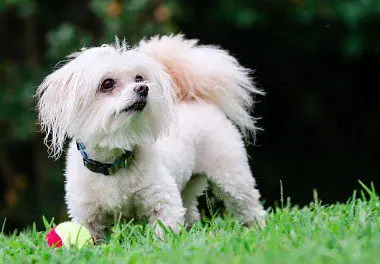
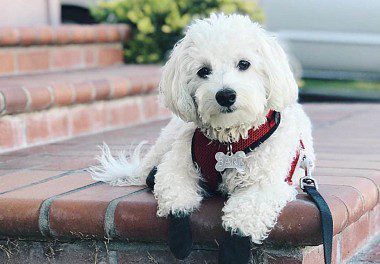
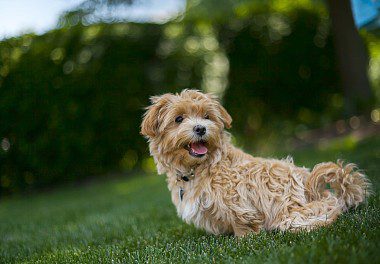


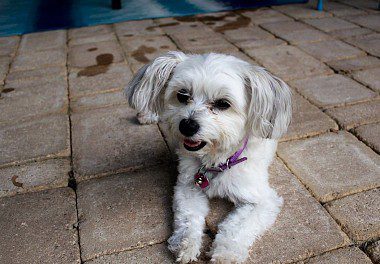
Maltipu character

In terms of intelligence, maltipu, of course, are not “Einsteins”, but you can’t call them silly jumpers either – the genes of a smart poodle make themselves felt. Smart and sociable, these funny “bears” love when they are paid attention, so squeeze the dogs in your arms, scratch their belly or gently pat their ears – the maltipu will be at the pinnacle of bliss from such an expression of sympathy.
In general, lap dog and poodle mestizos are non-conflict and accommodating pets, willingly sharing living space with other pets. They don’t give cats heart attacks or compete with other dogs for alpha status. At the same time, on the street, the maltipu gets a little impudent and, depending on the mood, they can go in search of trouble. For example, they easily provoke a shepherd dog into an aggressive attack or bark at a decorative dog shaking with fear and nervous tension.
At home, maltipu are such “curious barbarians” in dog form. Tracking all the movements of the owner around the apartment, annoying attempts to participate in any undertakings of the owner, whether it is cooking dinner or exercising on a treadmill, turn the maltipa into sociable, but very loving pets who do not know how and do not want to dose their own feelings. Therefore, so that the dog does not “drown” one person in its gratitude, it is better to take it into a family where the animal will have to distribute the positive charge among all household members. As for emotionality and sociability, in this regard, maltipu do not age. At the respectable age of 10, the dog will meet you at the door with the same enthusiasm as in the years of youth.
Education and training
Maltipu are not stupid and a little conceited dogs, so they easily master simple acrobatic tricks and demonstrate them to people with pleasure. On the other hand, you need to find an approach to the breed (not to be confused with outright fawning). Maltese and toy poodle mestizos cannot stand rudeness and commanding tone, it is also impossible to force them to do something against their will, so start working with a puppy from the day he appeared in your house.
Experienced owners claim that the brain of a two-month-old maltipoo is completely ready to start learning elementary educational material. But animals whose upbringing and training were postponed to a later date are no longer so malleable and quick-witted. Early socialization of the Maltipoo also does not hurt. The label “designer pet” should not turn dogs into recluses who have no idea what is happening outside the walls of the apartment. Otherwise, the principle of training fluffy charms is similar to the method of training the same Maltese lapdogs. Engage the maltip in a new, unusual activity for him, do not delay the lessons (5 minutes of exercises and then a break), desperately praise the dog for any, even the most insignificant achievements, or treat him to something delicious.
How expedient it is to teach the maltipa the basics of OKD, the owner will have to decide on his own. However, knowing basic commands like “Fu!” and “To me!” it definitely won’t hurt the breed, since picking up leftover food from the ground is dangerous for any animal. As an alternative to OKD, you can consider the Managed City Dog course. And don’t let the decorative and designer status of the breed confuse you, because even it does not relieve the maltip from the need to obey the requirements of a person.
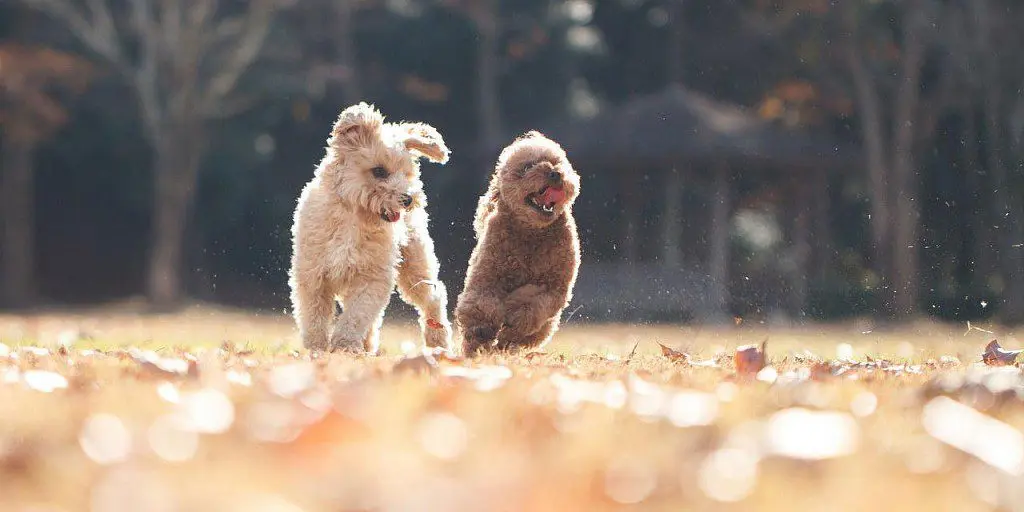
Maintenance and care
Like any pet, the Maltipu should have its own place in the house. Usually the bed is installed in a secluded corner, away from windows and doors, because the breed is afraid of drafts. And of course, immediately after moving out of the kennel, the dog must “acquire” material possessions such as bowls for food and water, toys, a tray, as well as a leash and collar.
The complexity of caring for a Maltipoo directly depends on the type of its coat. So, for example, the least problems with individuals with straight silky hair. Three combing sessions a week and your pet is Mr. Glamor. With curly “bears” more fuss. Firstly, they will have to be scratched daily. Secondly, even with the most careful study, the spring-like hairs of mestizos strive to fall into tangles, which are not very pleasant to disassemble.
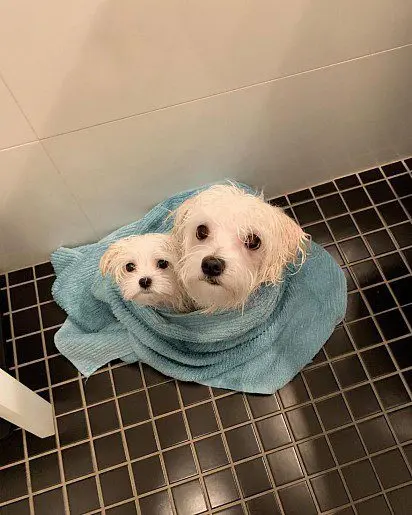
You should bathe the Maltipoo about a couple of times a month. This will help wash off not only dirt, but also dead hair, which the breed does not fall out on its own. Just check with your pet store for a suitable shampoo beforehand. An improperly selected product can worsen the structure of the maltipu hair, as well as lead to serious problems like alopecia.
The washed wool is dried with a towel or hair dryer in a gentle mode. Naturally dried maltipu do not look as neat and look more like mutts than elite pets. As for the haircut, then 2-3 times a year the mestizos of the lapdog and poodle are supposed to be taken to the groomer to work on the image of the animal.
Most salons offer standard types of haircuts for maltipoo: model (looks more spectacular on smooth-haired individuals), under a puppy and under a typewriter. Dogs with curly hair, in addition to clipping, are “plucked” by removing dead hair by hand or with a trimming knife. The final stage of salon grooming is wool perfume. No, the maltipu does not smell like a dog at all, but the designer status of the breed obliges it to all sorts of “bourgeois excesses”. If your ward is not an Instagram star and not a frequenter of social events, you can limit yourself to a hygienic haircut, during which only the hair under the tail, between the fingers, in the ear funnels and on the muzzle is removed.
Cleaning the ears of the Maltipu is a must. Remove excess secretion and pollution accumulated in the funnel with a special lotion and a clean cloth. Many maltipu have inherited sour eyes and excessive lacrimation from lapdogs, therefore, for prevention in the morning, the mucous membrane of the eye should be blotted with a napkin soaked in ophthalmic lotion. True, such measures will not save you from the lacrimal paths, which are especially noticeable in white individuals. So if you are preparing your pet for a photo shoot, buy a clarifying powder or conditioner at the pet store.
The maltipu does not have the healthiest teeth that need systematic cleaning, otherwise the animal will get unpleasant sores. It is better to choose a smaller silicone nozzle for this procedure, so that it can easily enter the dog’s miniature mouth. And of course, do not forget to accustom the animal to the process from the first months of life, so that later you do not arrange an execution with desperate screams and whining.
paddock
Maltip needs daily emotional relaxation in the form of a walk, but you won’t have to wander around squares and parks with these “cubs” for hours. To go to the toilet and break away in full, the Maltip needs 20-30 minutes a day. In winter, it is better to shorten the promenades, and you should only take the dog out into the street after thoroughly “insulating” it with a blanket or overalls: since the breed is practically devoid of undercoat, in chilly weather, the maltipu has time to freeze already in the first minutes after leaving the house. Organizing leisure time for a dog in the fresh air is quite simple: you can wander the streets with it or entertain yourself with outdoor games – exercises with rubber balls are especially respected by the maltipoo.
Feeding

Most nurseries breeding designer breeds offer super-premium and holistic classes to feed the maltipa “drying”, for some reason they are silent about the fact that the natural menu is also not contraindicated for animals. In particular, dogs do an excellent job with finely chopped beef and other lean meats, fish fillets, and raw or scalded with boiling water liver. The only thing is that in this case it will be necessary to select the optimal diet by trial and error, since individual food intolerance is a serious thing, and its occurrence is difficult to predict. In addition, you will have to consult with a veterinarian about supplements that could satisfy the pet’s need for vitamins and minerals.
When it comes to choosing dry food for your Maltipoo, opt for varieties for small breeds. They are quite high in calories, and the croquettes in them are much smaller, which means that the dog will not have difficulty chewing. Give preference to foods high in animal protein and fat and with a minimum of carbohydrates. But do not forget that obesity for a maltipu is a common thing, so do not put supplements on the animal, no matter how sweetly it looks at you. Minimize your intake of grains, which the Maltipoo is often allergic to, by opting for grain-free “drying”.
Health and disease of the Maltipoo
Maltipu completely refutes the cliche about the outstanding health of the offspring obtained as a result of interbreeding. No, the breed is not considered sickly and fragile, but the risk that puppies will take on their ailments from the Poodle and Maltese is still decent.
Diseases often diagnosed in Maltipu:
- epilepsy;
- hypoglycemia;
- pancreatitis;
- patella;
- portosystemic hepatic shunt;
- heart disease;
- sebaceous adenitis;
- shaker dog syndrome.
Maltipu are not immune from eye diseases inherent in their ancestors. As a result, animals can develop progressive retinal atrophy, leading to partial or complete loss of vision.
How to choose a puppy
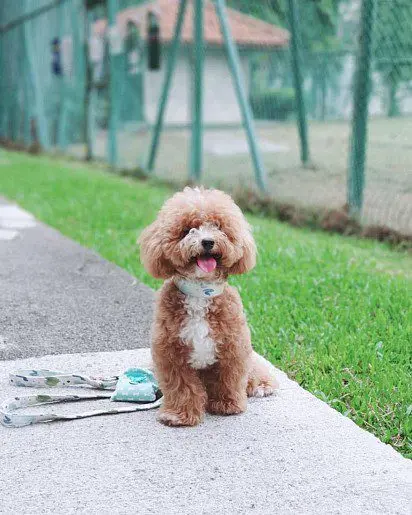
- Getting to know the litter sires and their pedigrees is a must if the parents are purebred poodles and Maltese .
- Immediately check with the seller what specific hybrids you are dealing with. It has been proven that Maltese and Poodle puppies (F1) are much cuter than babies from two Maltipu (F2). In addition, many F2 dogs have a traditional seasonal molt, which means goodbye hypoallergenic.
- When choosing a puppy from two maltipu, find out the age of the bitch. If the “girl” is less than two years old, it is likely that the puppies will be married and have genetic diseases.
- Litter heterogeneity for designer breeds is the norm. The toy poodle and maltese genes often form unpredictable combinations, so with a 99% probability, there will be no two identical babies among newborn maltipu.
- Since genetic diseases are the first thing Maltipos inherit from their parents, choose a breeder who does not skimp on DNA tests. In nurseries, where producers and litters are not examined for the presence of hereditary ailments, it is better not to linger.
- Maltipu puppies do not receive a pedigree in the classical sense, but it is very desirable that the litter be microchipped and have a veterinary passport.
- If the breeder says that he has received a license to breed a maltipoo from the American Hybrid Dog Club, this is a primitive scam, since such organizations do not issue any permits.
Photos of maltipu puppies

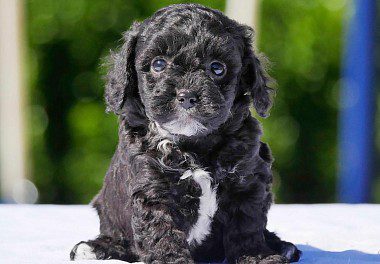
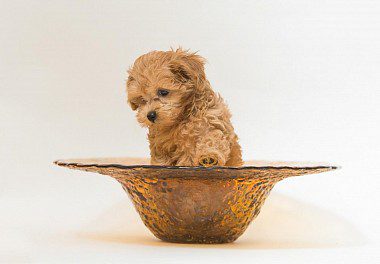
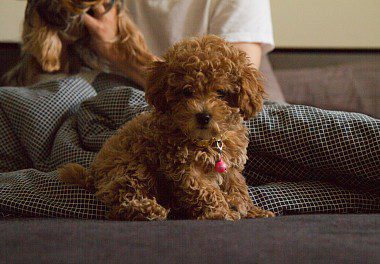
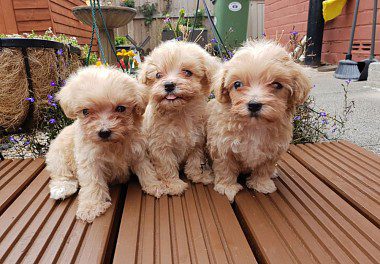
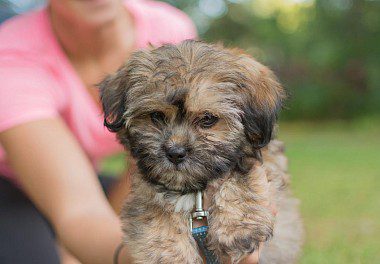
Maltipu price
The most expensive Maltipu – F1 hybrids imported from the USA – cost at least 1500$ per puppy. Mestizos of the same generation, but born as a result of mating of domestic producers, will cost much less – about 1000 – 1500$. The price tag for puppies obtained by crossing a Maltese with a poodle, and F2 babies is even lower – from 600$.



